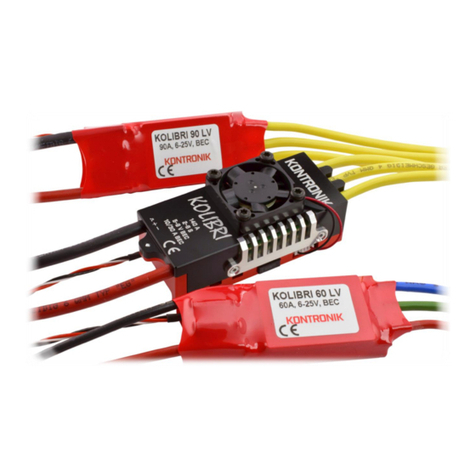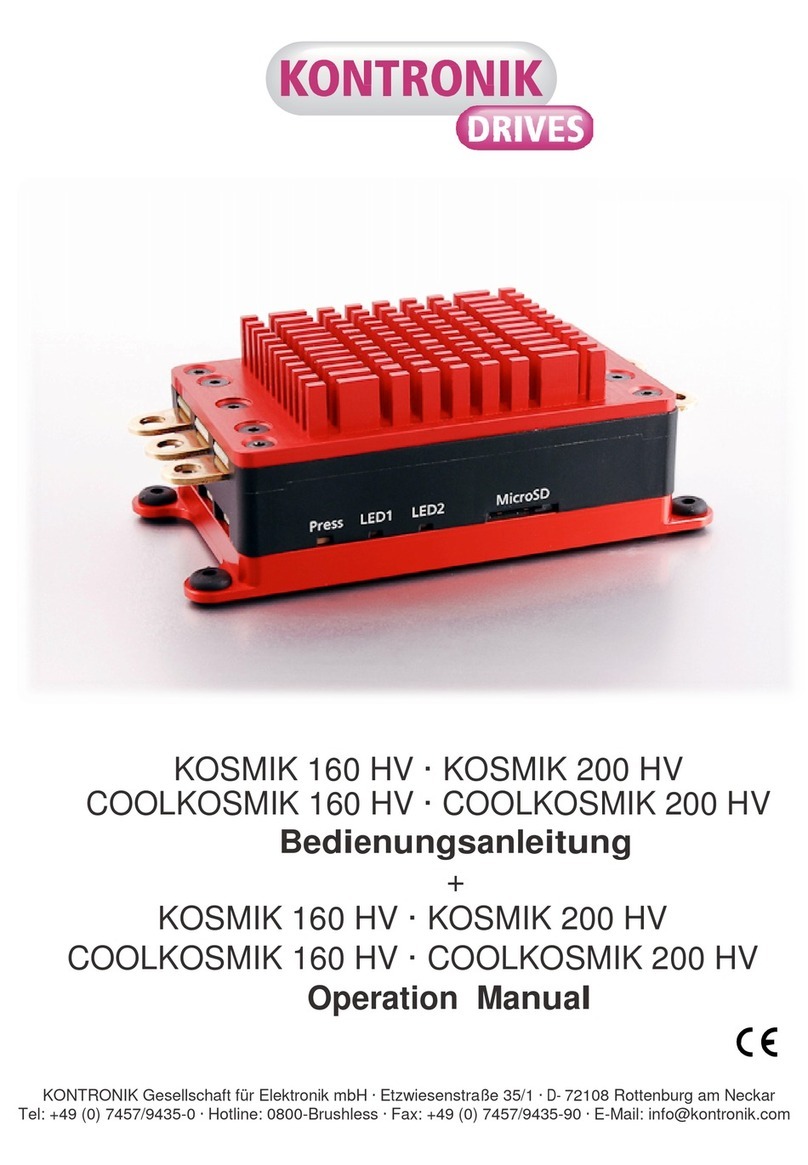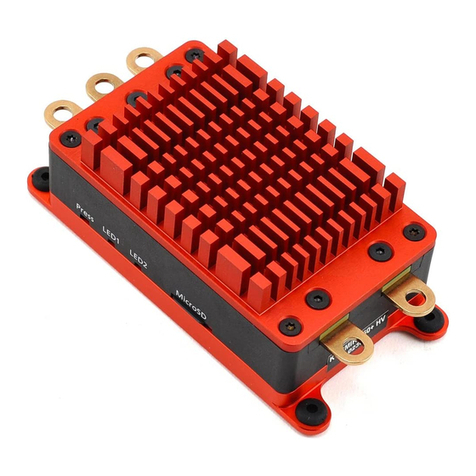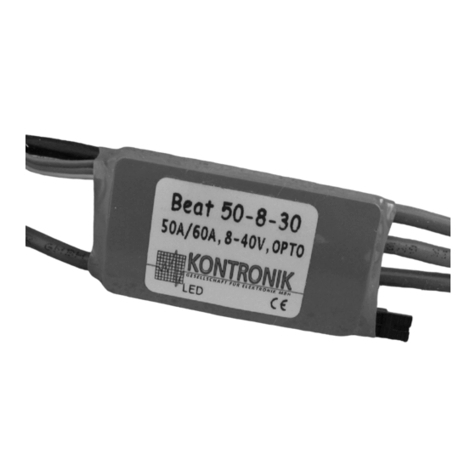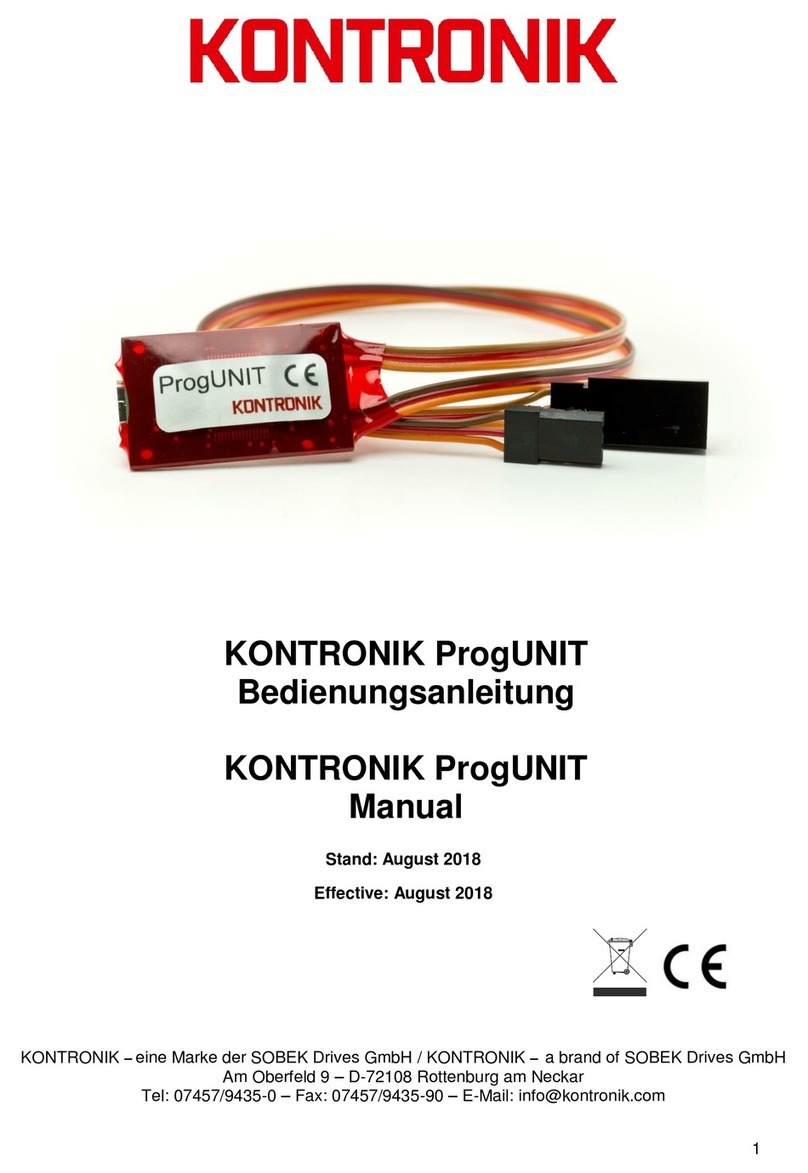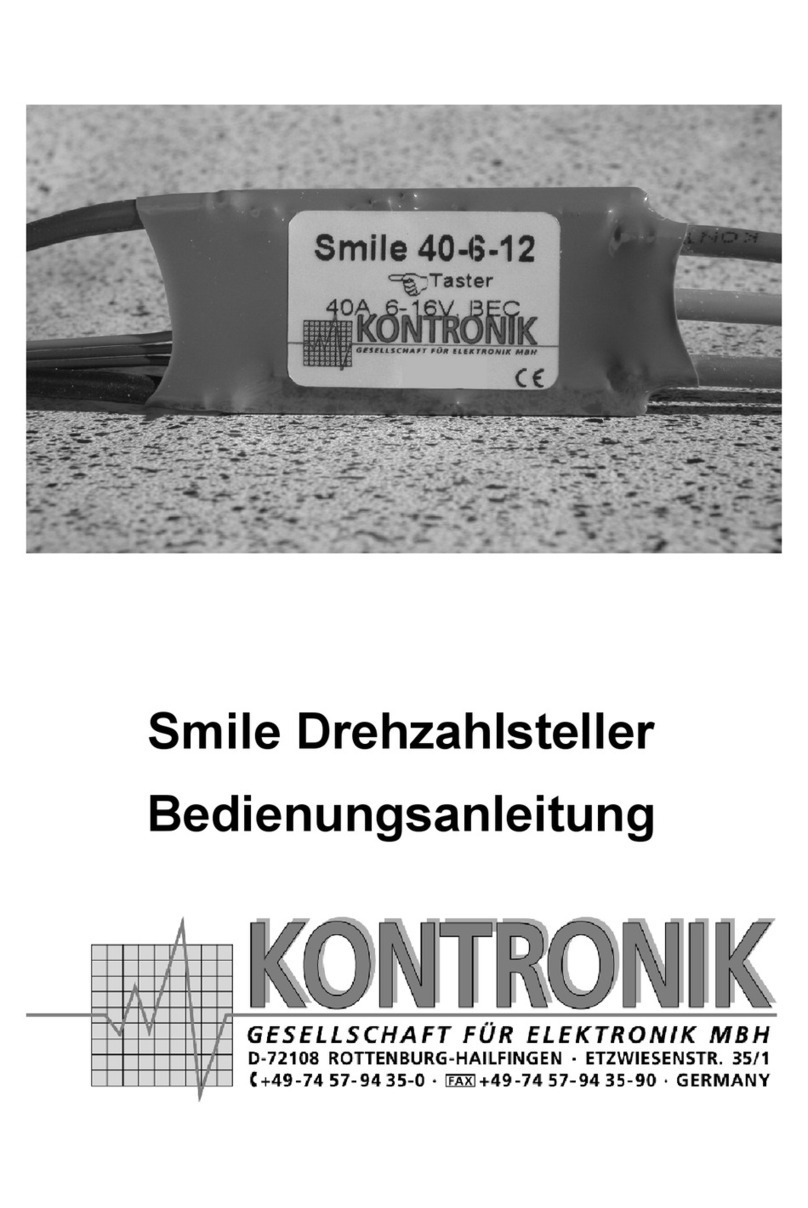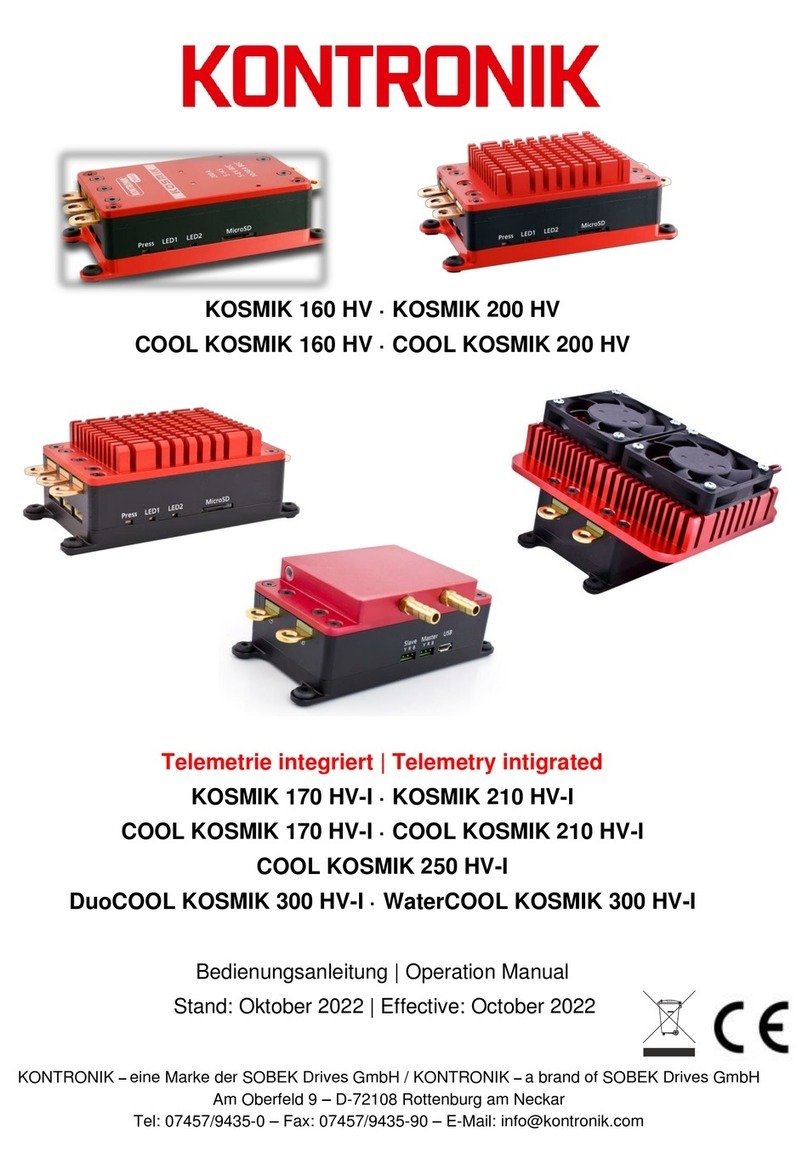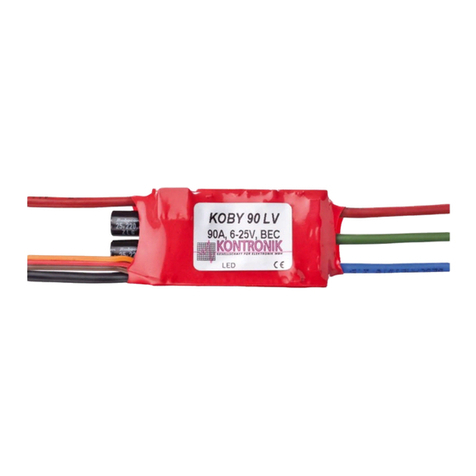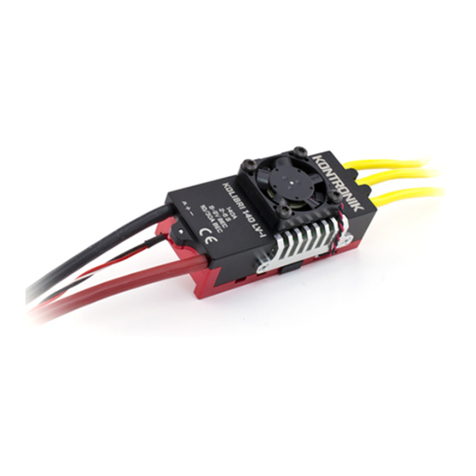
10
der Warnmeldung 9-fach Blinken achten.
7.6 Modus 10 - BEC Spannung
Der JIVE Pro wird serienmäßig mit einer BEC
Ausgangsspannung von 5,6 V ausgeliefert.
Diese kann über die Updateeinheit oder über
Modus 10 im Bereich 5 - 8 V verändert werden.
Modus 10 progr
a
mm
i
e
r
e
n
:
1. Schritte 1-7 Analog den vorherigen Modi
8. Nach dem 10. Einzelton ist Modus 10
e
r
reicht, den Gashebel auf Vollgas
(
100
%
)
s
t
el
len. Der JIVE Pro bestätigt die
Gasposition mit
e
inem Bestätigungston.
9. Danach wir die BEC Spannung eingestellt.
Begonnen wird mit 5 V (kein Ton). Je
Piepton wird die Spannung um 0,2 V
erhöht. Ist die gewünschte Spannung
erreicht, den Gashebel in Leerlaufposition
(0 %) bringen. Die eingestellte Spannung
wird durch einen ansteigenden
D
r
e
iklang
und die entsprechende Anzahl Pieptöne für
die eingestellte BEC Spannung bestätigt.
Das Erreichen der max. 8 V Ausgangsspannung
markiert ein Mehrfachton. Auch die 8 V Einstel-
lung muss durch Anfahren der Leerlaufposition
innerhalb 2 s bestätigt werden. Ansonsten bleibt
der ursprüngliche BEC Spannungswert erhalten.
8. Update
Auf JIVE Pro Drehzahlstellern können ohne Ein-
senden des Produktes zu KONTRONIK neue
Softwareversionen installiert werden.
V
o
raus-
setzungen für die Durchführung eines U
p
dates
sin
d
:
•
JIVE Pro Drehzahlsteller
•
KONTRONIK
Updateeinheit (Art.Nr. 9311)
•
PC mit Windows™ - Betriebssystem
•
I
n
t
e
rn
e
t
v
e
r
b
in
d
un
g
•
Akku
(
20
–
50
V
)
1. Trennen Sie den JIVE Pro vom Empfänger
(auch Slave) und verbinden Sie ihn mit der
Updateeinheit.
2. Verbinden Sie anschließend die
Updateeinheit mit einem Windows™ PC und
stellen eine Internetverbindung her.
3. Laden Sie von der KONTRONIK Homepage
(www.kontronik.com) die aktuelle Software-
version für Ihren JIVE Pro herunter und
speichern die Datei auf Ihrem PC.
4. Verbinden Sie den JIVE Pro mit einem
geeigneten Akku (20–50 V) und schalten die
Updateeinheit ein.
5. Führen Sie die Updatedatei auf Ihrem PC
durch Doppelklick aus.
6. Die auf dem JIVE Pro installierte Software-
version, wird beim Anschluss an die
Updateeinheit in der Bildschirmausgabe der
Update- Software ausgegeben.
7. Sobald der PC die Update Einheit und die
Update Einheit den JIVE Pro erkannt hat,
kann die Schaltfläche Update angewählt
werden.
8. Das Update wird anschließend automatisch
durchgeführt.
9. Während des Updates darf keine der
bestehenden Verbindungen getrennt werden.
10. Nach Fertigstellung des Updates erscheint
eine Bestätigung des Updates mit dem
Hinweis auf die erfolgreich installierte
Softwareversion.
11. Nach erfolgreich durchgeführtem Update
können sämtliche Verbindungen getrennt
werden, der JIVE Pro ist einsatzbereit.
ACHTUNG - Nach dem Update muss am
Regler ein Reset durchgeführt werden
(KONTRONIK Updateeinheit oder Modus
1). Ansonsten scheint der Regler tot.
Dabei werden sämtlich Voreinstellungen
zurückgesetzt, alle Programmierungen
müssen neu
v
org
e
nommen
we
rd
e
n
.
9. Bluetooth Kopplung
Um das BT-Modul an den JIVE Pro zu koppeln
gehen Sie bitte folgendermaßen vor:
•
Modusprogrammierung abschließen
•
Akku abziehen
•
Bluetooth Modul anschließen
•
Gaskanal am Sender auf Vollgas stellen
•
Akku an JIVE Pro anschließen
•
Koppelvorgang am Handy starten
•
Warten bis JIVE Pro ein 3x piepen ausgibt
•
Gaskanal auf Motor aus
